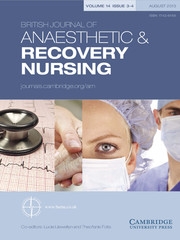Article contents
Neuron Specific Enolase (NSE): A Valuable Prognostic Factor of Central Nervous System Dysfunction Following Cardiac Surgery
Published online by Cambridge University Press: 01 February 2008
Abstract
The aim of this study was to evaluate neuron specific enolase (NSE) as prognostic factor for CNS disorders developed in relation to cardiac surgery.
A cohort of 92 patients were divided into two groups; the experimental group consisted of patients undergoing open-heart bypass surgery (50 patients) and the control group consisting of 42 patients undergoing general surgery procedures. The blood levels of NSE were measured in both groups before and 24 h after the operation and have been related to the incidence of the postoperative brain damage as well as to the duration of the extracorporeal circulation (ECC).
The analysis of our results showed that the changes of blood NSE levels, before and immediately after ECC in open-heart surgery have been related to the incidence of postoperative brain dysfunction according to a specific mathematical equation. This incidence was raised also in relation to the age of the patient and the duration of ECC. On the contrary, NSE seems to have no prognostic value in general surgery.
NSE can be used in cardiac surgery as a simple and reliable prognostic factor to predict postoperative brain dysfunction.
- Type
- Original Article
- Information
- British Journal of Anaesthetic & Recovery Nursing , Volume 9 , Issue 1 , February 2008 , pp. 22 - 28
- Copyright
- Copyright © British Association of Anaesthetic and Recovery Nursing 2008
References
- 3
- Cited by


